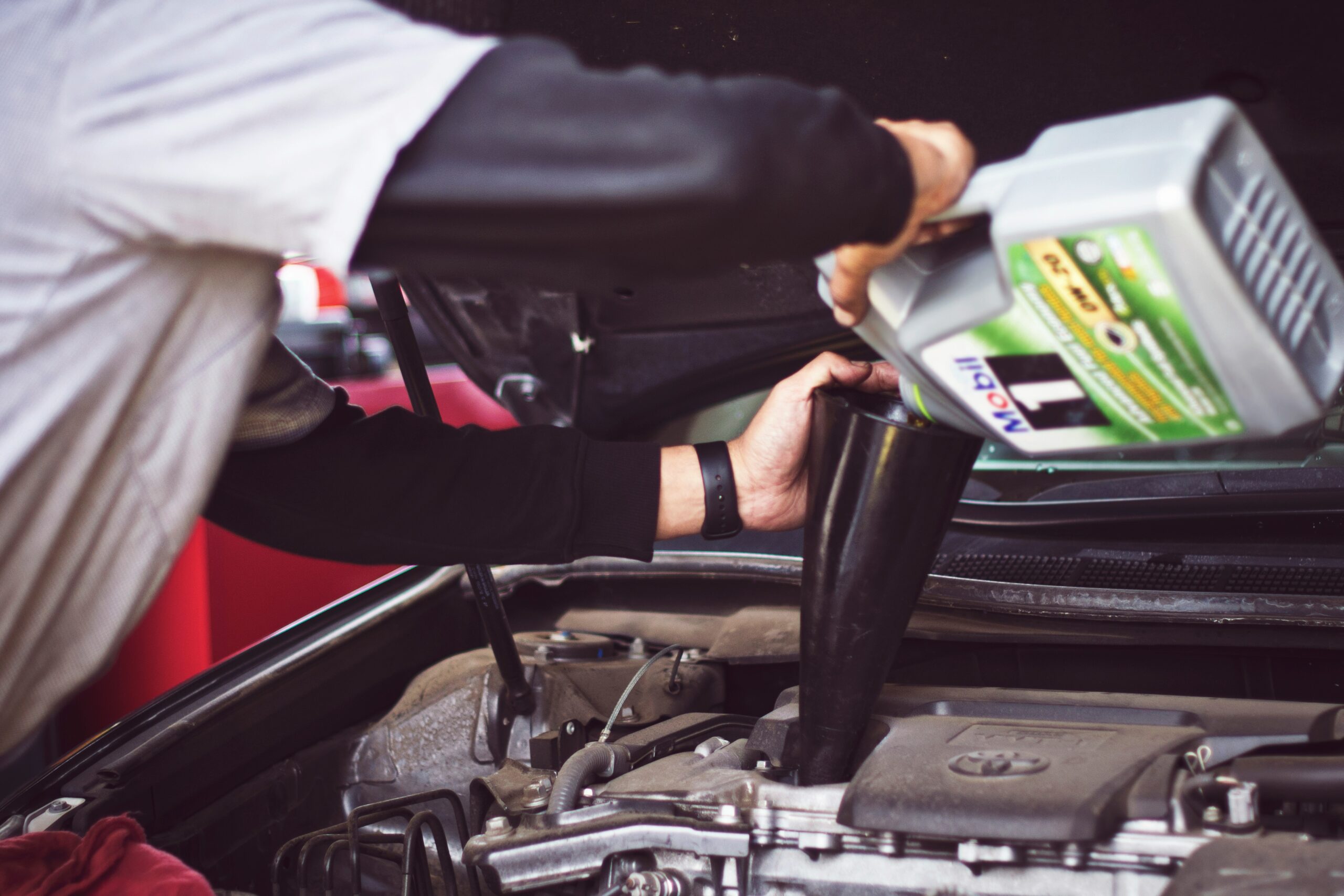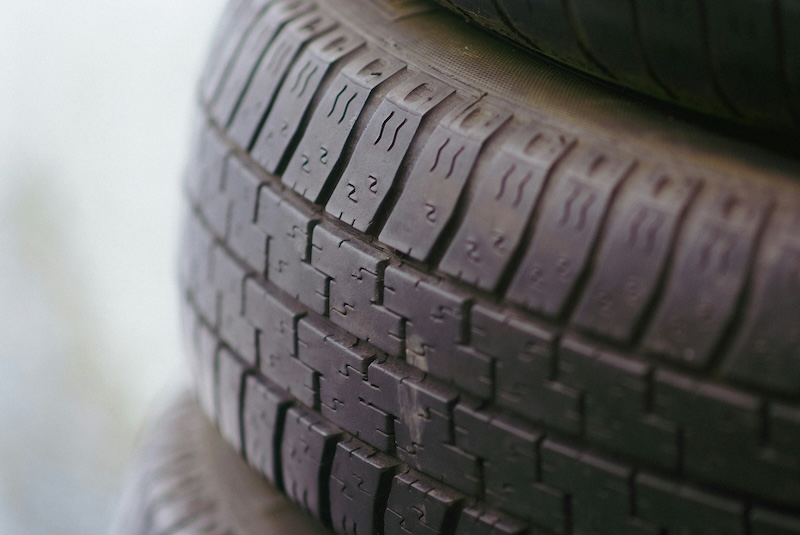

A car maintenance schedule is your roadmap for keeping your car running. It tells you what to check, when to check it, and why it matters.
Let’s dive into how to make sense of your car’s needs to keep things smooth behind the wheel.
- Your car maintenance schedule helps catch small issues before they become expensive headaches
- Use your owner’s manual as a maintenance checklist for things like oil changes, tire rotation, and filter swaps
- Standard car maintenance is probably more important than you think
- Keeping up with regular maintenance keeps your car running smoother (and can help with insurance or warranty claims down the road)
What’s a vehicle maintenance schedule?
A vehicle maintenance schedule is a set of routine car maintenance tasks your car needs to run properly. These schedules are usually based on mileage, time, or both. They cover everything from oil changes and air filter swaps to checking hoses, transmission fluid, and spark plugs.
Not every car or driving habit is the same, so your schedule might look a little different than your neighbor’s. The key is to check your owner’s manual for the manufacturer’s recommendations for your specific car. That’s your roadmap for keeping up with maintenance tasks that actually matter to your car’s lifespan and functionality.
How can I find my car’s maintenance schedule?
Start with your owner’s manual, it’s usually stashed in the glove box. Most manuals come with a recommended maintenance schedule tailored to your make and model, with detailed car maintenance checklists by mileage and time.
Can’t find your manual? You can also check your car manufacturer’s site, ask your dealership, or even find an app that tracks scheduled maintenance by car type.
What are common checkpoints for vehicle maintenance?
It can be tough to remember what’s due when, so here’s a quick breakdown of some common checkpoints:
Every month or 1,000 miles
Most of these tasks are quick, easy, and safe to do at home with simple tools:
- Check tire pressure & tread: Use a tire pressure gauge and visually inspect tread depth. Add air if needed.
- Check fluid levels: Open the hood and check engine oil (with dipstick), washer fluid, and coolant. Top off if low (never open the radiator cap when hot).
- Test lights & wipers: Turn on all exterior lights. Replace bulbs or wipers if not working.
Head to your mechanic if you notice consistent low fluid levels, bulging tires, or need help replacing your bulbs and wipers.
Every 3-6 months or 3,000-6,000 miles
For most of these tasks, it’s best to schedule an appointment with your mechanic, unless you have tools and experience:
- Oil changes: Changing engine oil and oil filter requires proper tools and disposal of old oil. Many prefer to have this done professionally, especially for modern vehicles.
- Air filters: Inspecting or replacing the cabin and engine air filters can often be done at home (refer to your owner’s manual for guidance), but a mechanic can handle these during your service visit if you’re unsure.
- Inspect hoses & belts: Have your mechanic inspect for cracks, leaks, or wear on hoses, serpentine belt, and drive belts.
- Check fluids: While you can check levels at home, a professional should flush or replace these fluids if they’re dirty or old.
- Tire rotation: Rotating tires requires lifting the car safely. If you’re not comfortable doing this, have your shop rotate and balance them.
Every year or 12,000-15,000 miles
Most annual maintenance checks are best completed by a professional to ensure critical systems are working safely and efficiently:
- Replace engine air filter: You can do this at home if you’re comfortable, otherwise, most shops replace it during annual service.
- Check spark plugs and timing belt: These parts are crucial for engine performance and often difficult to access, let your mechanic inspect and replace them as needed.
- Brake system inspection: Have the shop check pads, rotors, calipers, and brake fluid condition for safety.
- Exhaust system: Your mechanic should check for leaks, corrosion, or damage under the vehicle
- Wiper blades & A/C system: Replacing wipers is simple if you want to DIY. If your air conditioning isn’t cooling properly, let a pro check the system
For cars with automatic transmissions, scheduled maintenance will include checking and sometimes replacing transmission fluid. Don’t let old or dirty fluids slip, this is essential preventative maintenance.
What car parts need regular maintenance?

No matter what you drive, a few parts need extra attention if you want your car to stick around for the long haul. Here’s a rundown of the main players you’ll want to keep an eye on as part of your regular maintenance routine:
- Oil changes: Fresh motor oil protects your engine; skipping oil changes boosts wear and tear, reducing fuel efficiency and the overall lifespan of your car
- Tire rotation and pressure: Keeping tires even prevents blowouts and helps with fuel efficiency. Low tire pressure or worn tread can also mean trouble with traction
- Air filter and cabin air filter: Clogged air filters sap engine performance and mess with your AC system
- Spark plugs: Bad spark plugs make your engine misfire and hurt performance, but they’re easy to replace during regular maintenance
- Brake pads and brake fluid: Your brake system is your last line of defense. Thin brake pads or dirty fluid can lead to costly repairs or dangerous driving
- Coolant and antifreeze: Overheating is expensive. Checking coolant levels is a simple way to protect your engine
- Washer fluid and wiper blades: Seeing clearly is non-negotiable, and fresh wiper blades mean safer road trips year-round
Does regular maintenance matter for insurance?
Yes, not sticking to your car maintenance schedule can impact your car insurance. Skipped maintenance tasks, like overdue oil changes or ignored filter changes, can sometimes lead to breakdowns or other issues, and insurers won’t cover claims caused by poor upkeep.
Let’s say you have comprehensive coverage and come out one morning to discover your car’s been stolen. Frustrating, right? But if your car’s locking mechanism had been broken for months and you never got it fixed, that’s a regular maintenance issue. If it turns out the theft happened because someone could easily get into your car thanks to that broken lock, your insurance claim could be denied.
In other words: taking care of little things now can make a big difference if you ever need to file a claim.
Plus, maintenance records can also help with your warranty and boost resale value by showing a pattern of preventative maintenance.
Before we go…
Taking care of your car means easier, safer driving, and makes things simpler if you ever need to file an insurance claim with Lemonade. If you’re already on top of your vehicle maintenance, you’re in a great spot. For everything else: that’s what we’re here for.
While you’re here, why not get a quote? It’s fast, easy and even a little fun.
Car maintenance FAQs
What is the 30-60-90 rule for cars?
The 30-60-90 rule is a simple way to remember major car maintenance milestones: check and possibly replace key parts at 30,000, 60,000, and 90,000 miles.
At 30,000 miles, you’ll usually swap out the air filter and maybe brake fluid. At 60,000 and 90,000 miles, expect bigger jobs like changing spark plugs, timing belts, or transmission fluid. Always follow your vehicle’s owner’s manual, since your specific vehicle might have unique needs.
Is it worth doing your own engine oil and filter change?
Doing your own oil and filter change can definitely save money, and it’s a great way to learn more about your car’s maintenance. If you’re comfortable with basic tools and can safely dispose of old oil, it’s a straightforward task for most vehicles.
That said, make sure you follow manufacturer’s recommendations and use the right motor oil, oil filter, and safety precautions. If you’re not sure, a professional oil change is always a safe bet.
How do maintenance records affect resale value?
Good maintenance records show potential buyers that you’ve taken care of key tasks like oil changes, tire rotations, and filter changes. Buyers often look for a vehicle with reliable upkeep and a clear history. It can help you get a better price and make your car stand out against others on the market.
What happens if I miss a regular maintenance check?
Missing a maintenance check now and then isn’t the end of the world, but skipping scheduled maintenance too often can lead to costly repairs and even safety issues. Things like unchanged engine oil, worn brake pads, or old coolant might not cause problems right away, but they’ll add up over time.
If your car breaks down due to missed maintenance, it could also affect your warranty. Staying on schedule is the best way to keep your car running smoothly and avoid surprises.
How is Regular car maintenance different for electric vehicles (EVs)?
EVs skip many traditional car maintenance tasks, like oil changes and timing belts, because they don’t have an internal combustion engine. However, you still need to keep up with things like tire rotations, brake fluid changes, and cabin air filter replacements.
Battery health, software updates, and keeping your charging system in good shape are all part of a typical EV maintenance schedule. While there may be fewer moving parts, regular upkeep is still key to a long EV lifespan.
A few quick words, because we <3 our lawyers: This post is general in nature, and any statement in it doesn’t alter the terms, conditions, exclusions, or limitations of policies issued by Lemonade, which differ according to your state of residence. You’re encouraged to discuss your specific circumstances with your own professional advisors. The purpose of this post is merely to provide you with info and insights you can use to make such discussions more productive! Naturally, all comments by, or references to, third parties represent their own views, and Lemonade assumes no responsibility for them. Coverage and discounts may not be available in all states.



